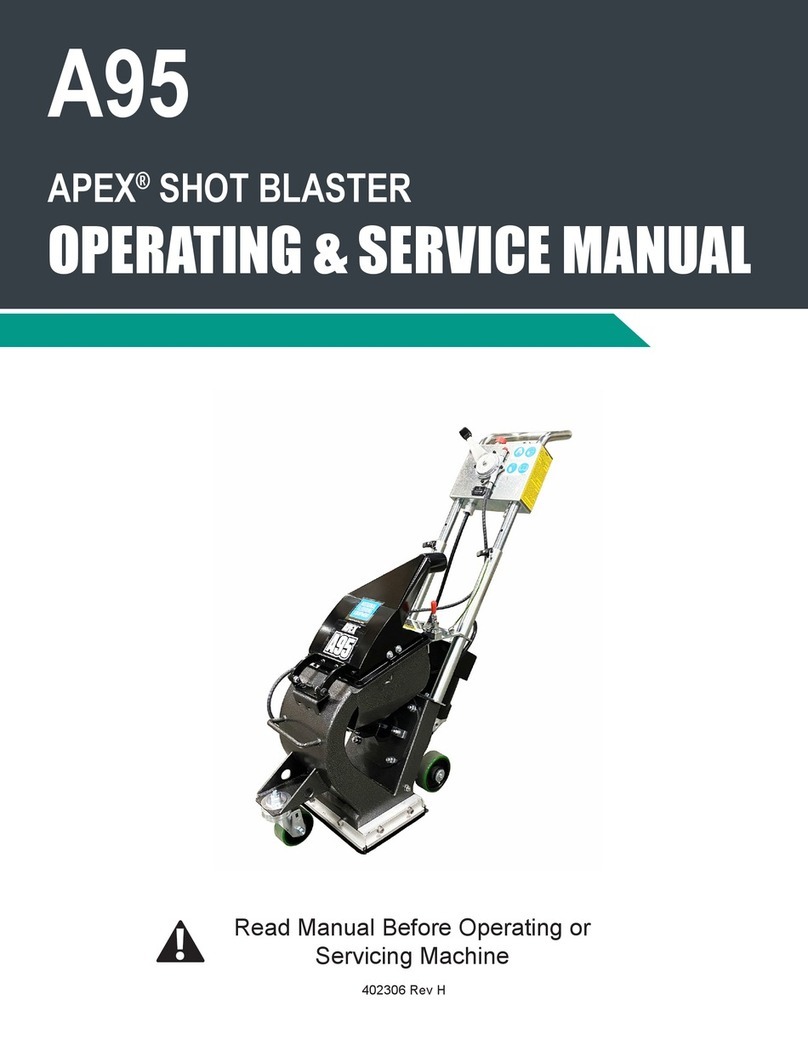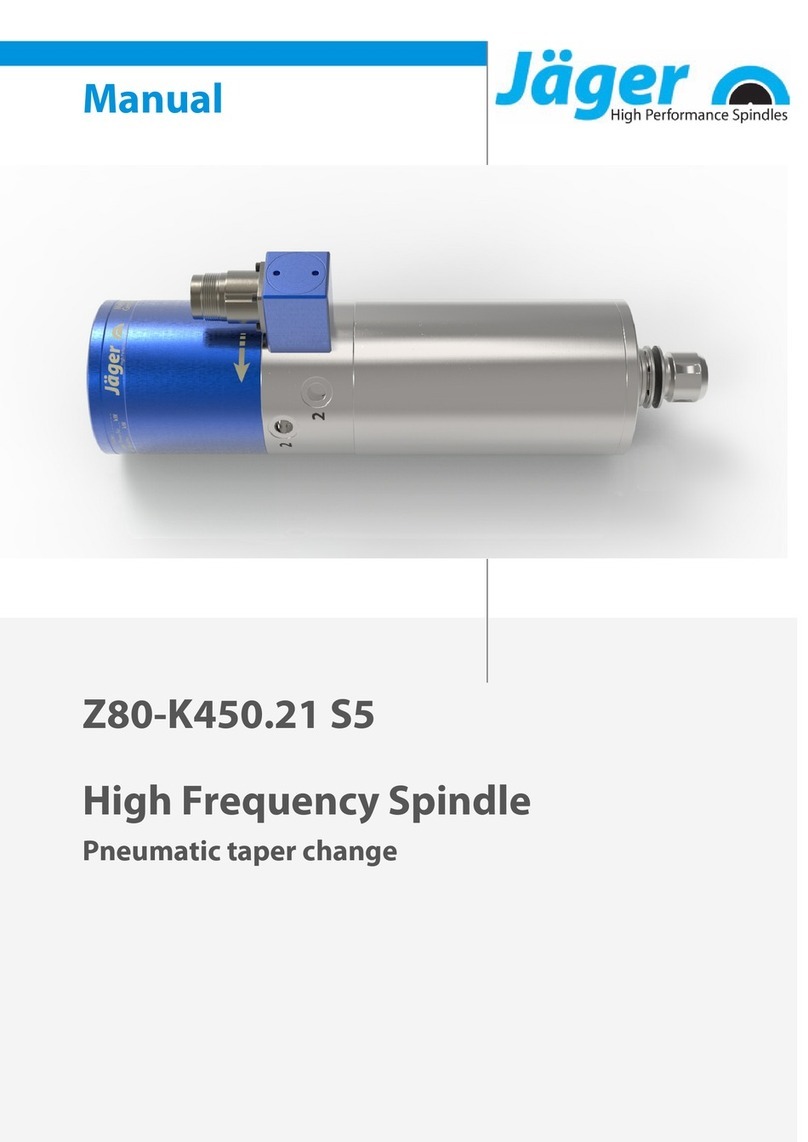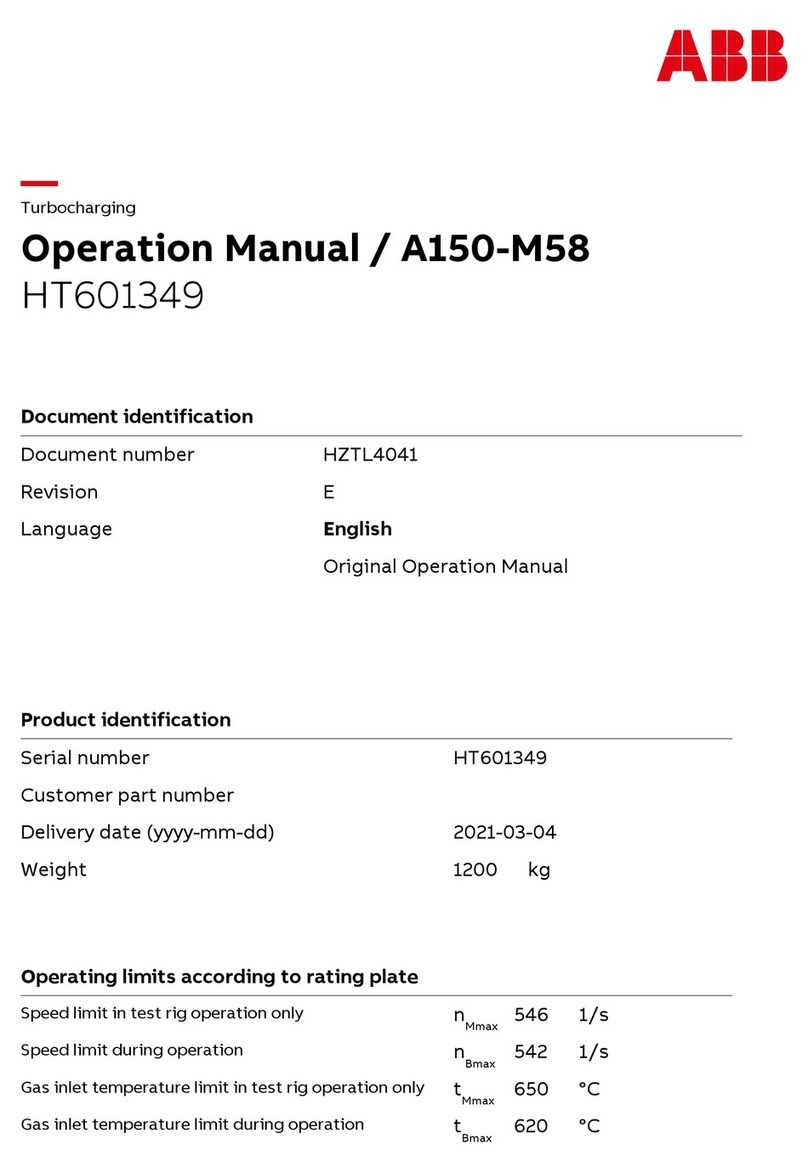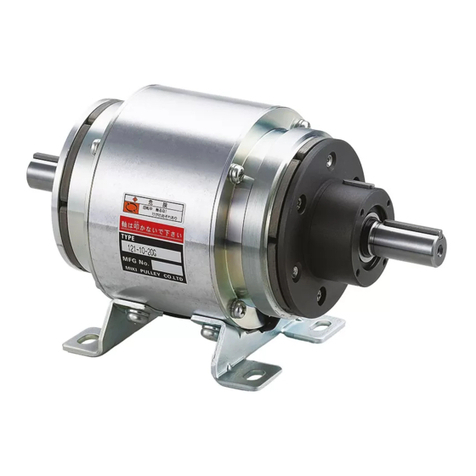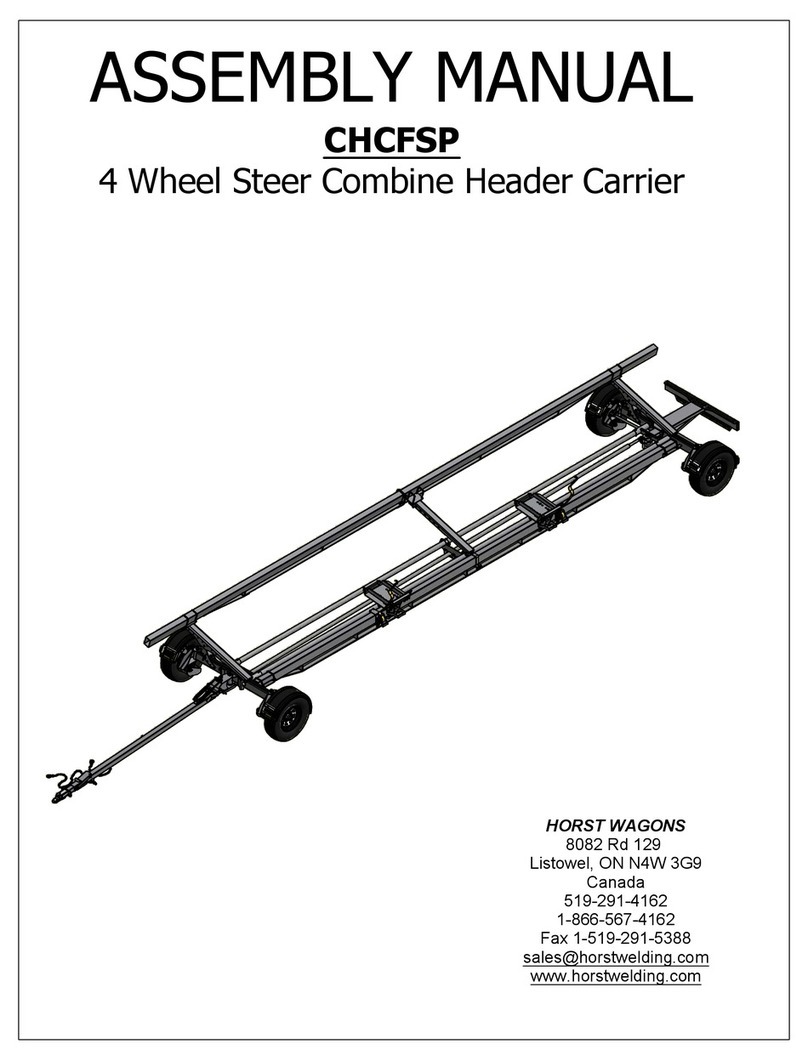Apex Digital EK76 User manual

www.apexanalog.com
Subject to Change
© Apex Microtechnology Inc.
All rights reserved
May 2020
EK76U Rev A
Evaluation Kit
EK76
APPLICABLE PARTS (SOLD SEPARATELY)
• SA310KR
INTRODUCTION
This kit contains everything needed for rapid prototyping with the SA310KR 3-phase driver. With a multi-
tude of circuit options, the EK76 offers versatility when in comes to connecting inputs, measuring outputs,
and conditioning signals to the specific application environment. High- and low- input signals for each phase
may be supplied from any 3 V to 18 V digital controller via standard pin header or SMA connectors. A remov-
able 50 Ω termination resistor is offered for impedance-matched inputs. Coaxial measurement points are
offered for high-fidelity waveform measurement, so erroneous overshoot/ringing are cut down to a mini-
mum. The layout is carefully optimized for signal and power transmission, while permitting easy integration
with system controllers and 3-phase loads.
ABSOLUTE MAXIMUM RATINGS
All specifications listed in the SA310 datasheet apply to this board, except as noted below. This board
uses components that limit SA310's full operating range in exchange for convenience to the customer.
Parameter Symbol Max Units Limited By
Output Current, continuous, within SOA IOUT 20 A DUT-socket
Power Dissipation, SA310 PD60 W DUT-HS

EK76
2 EK76U Rev A
Figure 1: Circuit Diagram
DUT
Vcc
INW_HS
INW_LS
INV_HS
INV_LS
INU_HS
INU_LS
DGND
PGND_W
OUT
_W
+
VS_VW
OUT
_V
PGND
_V
+
VS_U
OUT
_U
PGND
_U
R3
HS
,CSR
R2
HS
,CSR
R1
HS
,CSR
+Vs
PGND
W
V
U
P5
P3
P4
8
7
6
5
4
3
2
1
IMON_V
IMON_U
IMON_W
9
10
11
12
13
14
15
16
INW_H
INW
_L
INV
_H
INV
_L
INU
_H
INU
_L
P14
P
13
P
12
P
11
P
10
P
9
P8
P7
P6
P1
1
3
5
7
9
11
13
15
2
4
6
8
10
12
14
16
INU_H
INV
_H
INW
_H
IM
_U
IM
_W
INU_L
INV
_L
INW
_L
IM
_V
P2
V
CC
CBP1 D1
CBP3CBP2
CBP5
CBP4 R4
R5
D2
D3
1
2
3
4
5
6
7
8
9
10
R6-
socket
1
2
3
4
5
6
7
8
16
15
14
13
12
11
10
9
R7
J1
Press-Fit Sockets –
90
mil PTH ±2 mil
+
+
R8
LED1
VCC
P16
P15
DGND PGND
8
7
6
5
1
2
3
4
VCC
VCC
8
7
6
5
1
2
3
4
VCC
VCC
8
7
6
5
1
2
3
4
VCC
VCC
R9
+
-
+
-
+
-
+
-
V+ V-
1
2
3
4
5
6
7
14
13
12
11
10
9
8
R10
R11
R12
R17
R18
R19
R20
R14
R15
R16
R13 VCC
R21
R22
VCC
BIAS
BIAS
BIAS
GNDU
IMONU
IMONV
GNDV GNDW
IMONW
R24 C2
CURRV
CURRU
R23 C1
R25
C3
CURRW
C4
U1
D4
D5
D6
OPTIONAL CURRENT SENSE CIRCUIT

EK76
EK76U Rev A 3
PARTS LIST
Reference Manufacturer Part # Description QTY
Printed Circuit Board
EVAL94 EVAL94 Printed Circuit Board 1
Resistors
R1, 2, 3 CSR03 Res, 10mΩ, 16W, 5%, TO-220 3
R4,5 CFR-50JB-52-430K Res, 430kΩ, 1/2W, 5%, Axial 2
R6 4610X-101-510LF Res, 9 array, 51Ω, 0.2W, SIP 1
R6-socket PPTC101LFBN-RC SIP Socket, 10pin 1
R7 4116R-1-221LF Res, 8 array, 220Ω, TH DIP 1
R8 RR03J150KTB Res, 150kΩ, 3W, 5%, Axial 1
Capacitors
CBP1 OX7RR105KWN Ceramic Cap, 1 µF, 200V 1
CBP2, 3 2220Y1K00474KXTWS2 Ceramic Cap, 470nF, 1KV, X7R, 2220 2
CBP4, 5 380LX122M400A082 Electrolytic Cap, 1200µF, 400V 2
Diodes
D1 P6KE27A-TP TVS diode, 23.1V standoff, 5W 1
D2, 3 P6KE400A TVS diode, 342V standoff, 5W 2
D4, 5, 6 UC3611N Diode, 4 array, 50V, 3A 3
LED1 LTL2R3KRD-EM LED, red, 2mA nominal 1
Hardware
DUT-socket 6342-0-15-15-42-27-10-0 Pin Receptacle, 20A 16
P1 TS01 5-Block Terminal Strip 1
P2 M20-9980845 Pin header, 2 x 8, 0.1" pitch 1
P3, 4, 5 731711900 BNC connector, vertical, PC mount 3
P15, 16 571-0100 Banana Jack, horizontal, PC mount 2
DUT-HS HS39 Heatsink, Power DIP, slotted, 1.7°C/W 1
CSR-HS CR101-75AE Heatsink, 3 x TO-220, clip-on 1
CLA-TO-21E Heatsink Cam Clips 3
DUT-TW TW22 Thermal Washer, KR package 1
94639A288 3/16" nylon spacer 6
91841A007 #6-32 nut 6
90272A151 #6-32 x 3/4" panhead screw 2
90272A150 #6-32 x 5/8" panhead screw 4
91735A190 #8-32 x 1/4" panhead screw 4
2221 #8-32 x 2" standoff 4
TFT20014NA005-6" Teflon Tubing 1

EK76
4 EK76U Rev A
Optional Components (Not
Included)
P6-14 CON-SMA-EDGE-S SMA Connector 9
U2 LM6134BIN/NOPB Quad Op Amp, 14 DIP through hole 1
C1, 2, 3 - CAP 0805 Not Populated 3
C4 C0805C104M5RACTU CAP 0805 100nF 50V X7R 1
R9, 12, 13, 16, 17, 20 ERA-6AEB4992V RES 0805 49.9kΩ 1/8W 0.1% 6
R10, 11, 14, 15, 18, 19 ERA-6AEB103V RES 0805 10kΩ 1/8W 0.1% 6
R21 RMCF0805JT39K0 RES 0805 39kΩ 1/8W 5% 1
R22 3386P-1-103LF Trimmer, 10kΩ, Through hole 1
R23, 24, 25 RMCF0805ZT0R00 RES 0805 0Ω Jumper 3

EK76
EK76U Rev A 5
BEFORE YOU GET STARTED
• All Apex Microtechnology amplifiers should be handled using proper ESD precautions.
• Always use the heat sink included in this kit.
• Always use adequate power supply bypassing.
• Do not change the connections while the circuit is powered.
• Initially set all power supplies to the minimum operations levels allowed in the device data sheet.
• Check for oscillations.
• Please refer to Application Note, AN01 for general operating conditions.
ASSEMBLY INSTRUCTIONS
During the assembly, please refer to the circuit schematics, assembly drawings, and the data sheet of the
part being used on the evaluation kit.
1. Note that each side of the EVAL94 circuit board is identified as either the Component side or the DUT
(Device Under Test) side. The component side has the designators printed on that side.
2. First, insert the 16 pin receptacles from the DUT side, into the DUT position. These will be a tight fit, so a
flat piece of metal is recommended as a finger-shield to fully engage the receptacles with the plated
through-holes. This tight fit is meant to keep perpendicularity between the PCB and the pin direction.
Ensure the hexagonal portions go completely through the holes, and the circular flange rests on the DUT
side of the PCB. Solder the pin receptacles from the Component side.
3. Solder the surface-mount capacitors CBP1, CBP2, and CBP3 on the Component side.
4. If current-sense offset or gain adjustment is required, install the optional components U2 and surrounding
resistors/capacitors. These components are not included, as this is only necessary in unique applications
where current sense must be tightly managed. See "Current Sense" section below.
5. Install the smaller components, including R4-8, D1-6, LED1, and P2. Note that R6 includes a socket to eas-
ily swap between high-impedance inputs (R6 not installed) and 50-Ohm terminated inputs (R6 installed).
Each element of this resistor can dissipate up to 200mW. Match the direction of R6 with the PCB designa-
tor when installing. Also match all diode orientations with their respective designators.
6. Use a piece of heavy wire (16 to 14 AWG, 1.3 to 1.8 mm) to short J1. This should be the only connection
between digital ground (DGND) and power ground (PGND).
7. Install P3, P4, and P5 BNC connectors for output sense with an oscilloscope. This is best done by soldering
the center pin first to anchor the component in place, then soldering the 4 external lugs.
8. Install R1, R2, and R3. Their heights must be set by the widened portion of the pins resting on the Compo-
nent side of the PCB. This will place the plastic package 4mm above the PCB.
9. Apply a thin layer of thermal grease (not included) the backside of R1, R2, and R3. Place the CSR-HS
(CR101-75AE; the smaller of the two included heatsinks) behind these resistors, with the mounting lugs
engaging the PCB holes. Solder these mounting lugs while keeping the heatsink perpendicular to the
board.
10. From either side, slide the cam clips (CLA-TO-21E) into the hooked slot of the CSR-HS. The tabs should be
pointed at a 45° angle down and away from the heatsink. Once the clip is in front of a resistor, flip the tab
all the way up to apply pressure to each resistor.
11. Install P1, P15, and P16.
12. Install electrolytic bypass capacitors CBP4 and CBP5, ensuring that the orientation matches the circuit
schematic drawing.
13. P6 through P14 have edge-connector pads. These pads are designed for edge-mount SMA connectors (not
included). If SMA connection is not desired, leave these pads unpopulated. Otherwise, use recommended
part number CON-SMA-EDGE-S (or similar) and solder these to the board.

EK76
6 EK76U Rev A
14. Make sure all leads protruding out the DUT side are clipped to under 1/8 inch (3mm).
15. When installing the DUT-HS, start by temporarily fastening the central 2 holes to the board. Pass the #6-
32 x ¾" screws through the heatsink and place a nylon spacer on each. Carefully pass this assembly
through the matching holes on the PCB and fasten with #6-32 nuts on the component side.
16. Now, make a similar assembly at each corner of the heatsink. Pass the #6-32 x 5/8" screws through the
heatsink while holding a nylon spacer between the board and heatsink (pliers would be helpful). Fasten
with #6-32 nuts on the component side and tighten.
17. Undo the first two screws and nuts, but leave the nylon spacers sandwiched between the heatsink and
board.
18. Cut the Teflon tubing into ¼ inch (6mm) pieces and slide the pieces onto the pins of the DUT. This is an
added precaution to prevent the heatsink or thermal washer from shorting against the pins. One sleeve
on each of 4 corners of the DUT is sufficient. Do not cut Teflon longer than the recommended length, as
this will prevent proper seating of the DUT on the heatsink.
19. Place a single TW22 thermal washer over the heatsink area where the DUT will go. Place the DUT in this
space, so its pins pass through the TW22 and the heatsink slots. Rest the pins over the pin receptacles
from step 2. Engaging all 16 receptacles requires much force. Rather than applying this force by hand,
reinstall the #6-32 x ¾" screws and nuts, this time passing through the DUT tabs and TW22. With the #6-
32 nut on the component side, tighten the screws in small increments, switching frequently between the
two screws. Make sure the TW22 is loose and centered up until the final tightening, or else the metallic
foil can short out the DUT's pins.
20. Use the #8-32 x ¼" screws to mount a 2-inch standoff on each corner of the PCB.
HEATSINK GUIDELINES
Determining heatsink size for SA310 depends on several factors. Refer to SA310 datasheet for more infor-
mation on calculating power dissipation, thermal resistance, and finding thermal ratings.
MOTOR CONTROL
P2 is designed to match the “remote amplifier” connector on Precision Motion Device's DK78113 devel-
oper kit for the Juno Velocity & Torque Control IC. Follow the instructions in the DK78113 User Manual to
connect a remote amplifier. Applications requiring torque control will require the Current Sense gain and off-
set circuit described below. Use default values when pairing with the Juno device.
Other motor control ICs may be used with EK76, but these may require different wiring and/or current
sense circuits.

EK76
EK76U Rev A 7
CURRENT SENSE
The optional current sense gain and offset circuit is designed to interface with various ADCs in closed-
loop current/torque control. Follow the below schematic and equations to determine the proper component
values.
After assembly of the EK76 including the above Current Sense circuit, R22 must be trimmed to reach the
desired value of VOS. To do this, attach a Voltmeter to measure the voltage between pins 11 (negative) and
13 (positive) of P2. Apply the low-voltage supply VCC (+VS should NOT be active). Adjust R22 until the desired
value for VOS is shown on the Voltmeter.
The following equation represents the Low-Side Phase Current (IPHASE) as a function of voltage measured
at IM_X (VM):
Value Applicable Designators on
EVAL94 Equation Default
Value Units Suggested
Tolerance
VOS Bias ADC min input (or higher) 1.65 V -
VOUT_MAX - ADC max input (or lower) 3.3 V -
IOUT_MAX - < 80 A 33 A -
Gain -(VOUT_MAX-VOS) / (IOUT_MAX *
10 mΩ) 5 V/V -
RF R9, 12, 13, 16, 17, 20 1.8k < RF < 100k 50k Ω 0.1%
RIN R10, 11, 14, 15, 18, 19 RF / Gain 10k Ω 0.1%
RT R22 (potentiometer) 1k < RT < 100k 10k Ω -
RL R21 Roughly RT ((VCC/2VOS) – 1) 39k Ω -
C4 C4 C4 = 100n 100n F X7R
fFIL - Typically 200k < fFIL < 1M ∞Hz -
RFIL R23, 24, 25 Typically 100 < RFIL < 1k 0 Ω -
CFIL C1, 2, 3 1 / (2π * fFIL * RFIL) 0 F -
R1-3
10
ŵɏ
R
IN
R
IN
+
-
R
F
R
F
BIAS
R
FIL
C
FIL
IM_X
PGND_X
3X
+
-
1X
BIAS
R
L
R
T
V
CC
C4
PGND DGND
DGND
Phase
Current
IPHASE VMVOS
–
Gain 0.01
---------------------------------=

EK76
8 EK76U Rev A
Figure 2: Top View

EK76
EK76U Rev A 9
Figure 3: Bottom View

EK76
10 EK76U Rev A
NEED TECHNICAL HELP? CONTACT APEX SUPPORT!
For all Apex Microtechnology product questions and inquiries, call toll free 800-546-2739 in North America. For
inquiries via email, please contact apex.s[email protected]. International customers can also request
support by contacting their local Apex Microtechnology Sales Representative. To find the one nearest to you,
go to www.apexanalog.com
IMPORTANT NOTICE
Apex Microtechnology, Inc. has made every effort to insure the accuracy of the content contained in this document. However, the information is
subject to change without notice and is provided "AS IS" without warranty of any kind (expressed or implied). Apex Microtechnology reserves the right
to make changes without further notice to any specifications or products mentioned herein to improve reliability. This document is the property of
Apex Microtechnology and by furnishing this information, Apex Microtechnology grants no license, expressed or implied under any patents, mask
work rights, copyrights, trademarks, trade secrets or other intellectual property rights. Apex Microtechnology owns the copyrights associated with the
information contained herein and gives consent for copies to be made of the information only for use within your organization with respect to Apex
Microtechnology integrated circuits or other products of Apex Microtechnology. This consent does not extend to other copying such as copying for
general distribution, advertising or promotional purposes, or for creating any work for resale.
APEX MICROTECHNOLOGY PRODUCTS ARE NOT DESIGNED, AUTHORIZED OR WARRANTED TO BE SUITABLE FOR USE IN PRODUCTS USED FOR LIFE
SUPPORT, AUTOMOTIVE SAFETY, SECURITY DEVICES, OR OTHER CRITICAL APPLICATIONS. PRODUCTS IN SUCH APPLICATIONS ARE UNDERSTOOD TO BE
FULLY AT THE CUSTOMER OR THE CUSTOMER’S RISK.
Apex Microtechnology, Apex and Apex Precision Power are trademarks of Apex Microtechnology, Inc. All other corporate names noted herein may be
trademarks of their respective holders.
TEST ASSEMBLY
EQUIPMENT NEEDED
1. Power Supplies
2. Digital Controller or 6+ Channel Pattern Generator
3. Oscilloscope
4. Proper Heatsinking System
TEST SETUP
Make sure all supplies are turned off before connection. Connect the power supplies VCC (via P15 and
P16) and +VS (via P1). See SA310 datasheet for acceptable voltage levels. The +VS LED will be visibly bright for
voltages 30V and above. For lower voltages, consider using a smaller-value resistor for R8.
When sequencing power supplies, use the following order:
Power ON: VCC, then +VS
Power OFF: +VS, then VCC
It is recommended to first test the device with no load attached. Ensure the output waveform follows the
expected results before connecting a load. Consider power dissipation in the amplifier, sense resistors, and
the load.
The BNC connectors P3, P4, and P5 are designed for coaxial measurement of the output; these are not
meant to carry significant current. ONLY USE P1 FOR HIGH-CURRENT CONNECTIONS. To use P3-P5, for volt-
ages within the oscilloscope's input rating, BNC cables may be used to connect directly to the oscilloscope.
For higher voltages, use a high-voltage oscilloscope probe with a probe-tip-to-BNC adapter. Alternatively, use
high-voltage BNC attenuators in series with the BNC cable.
Table of contents
Other Apex Digital Industrial Equipment manuals
Popular Industrial Equipment manuals by other brands
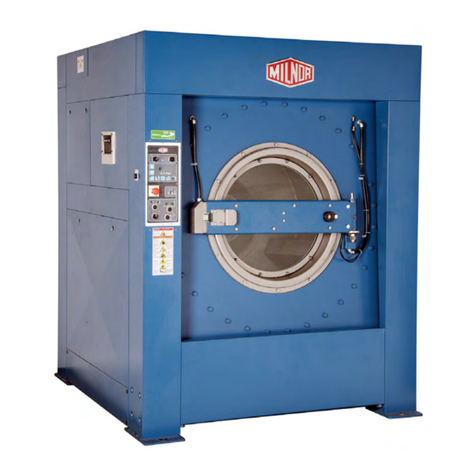
Milnor
Milnor MWF125J7 manual
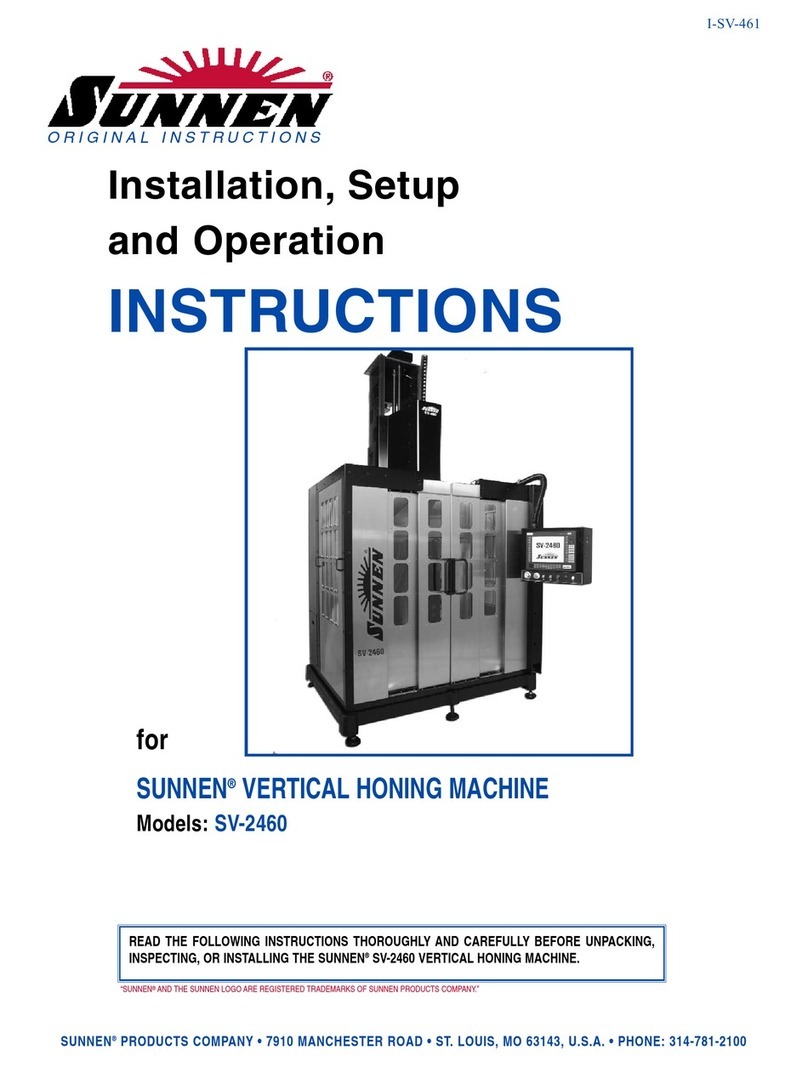
Sunnen
Sunnen SV-2460 Installation, setup and operation instructions
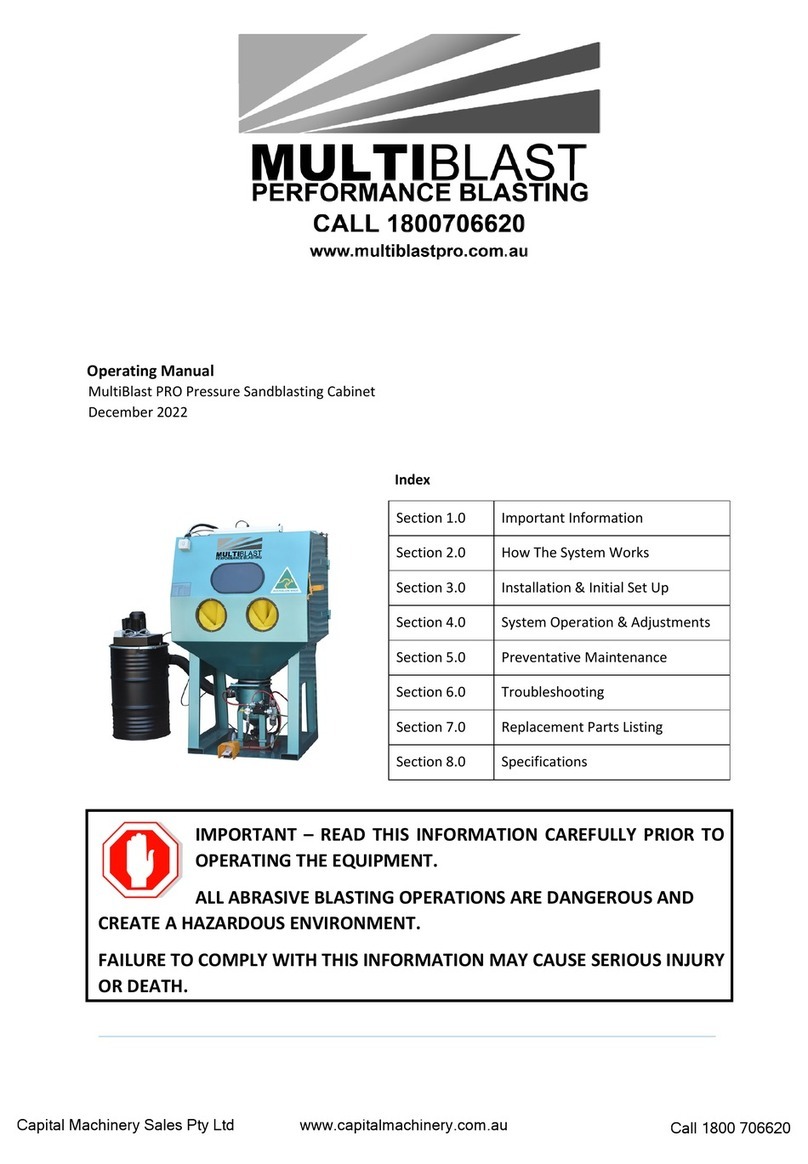
MultiBlast
MultiBlast PRO operating manual
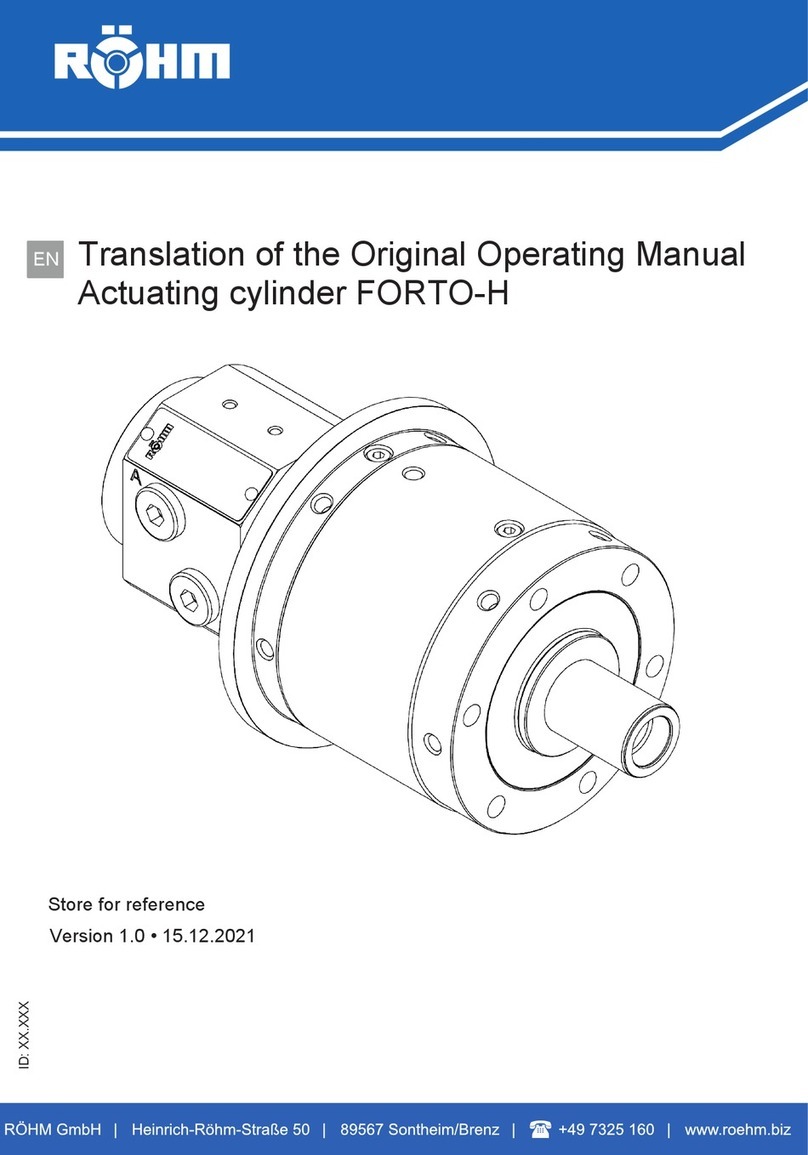
Rohm
Rohm FORTO-H 70 Translation of the original operating manual

Excelitas Technologies
Excelitas Technologies OmniCure AC7 Series user guide
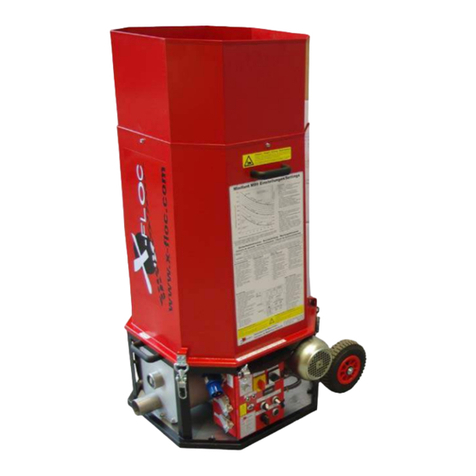
X-FLOC
X-FLOC Minifant M99 operating manual
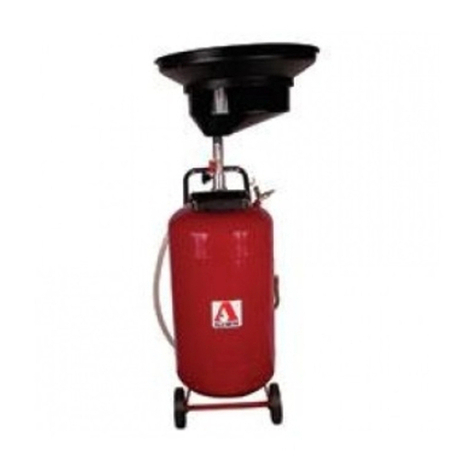
Alemite
Alemite 8587-1 Service guide
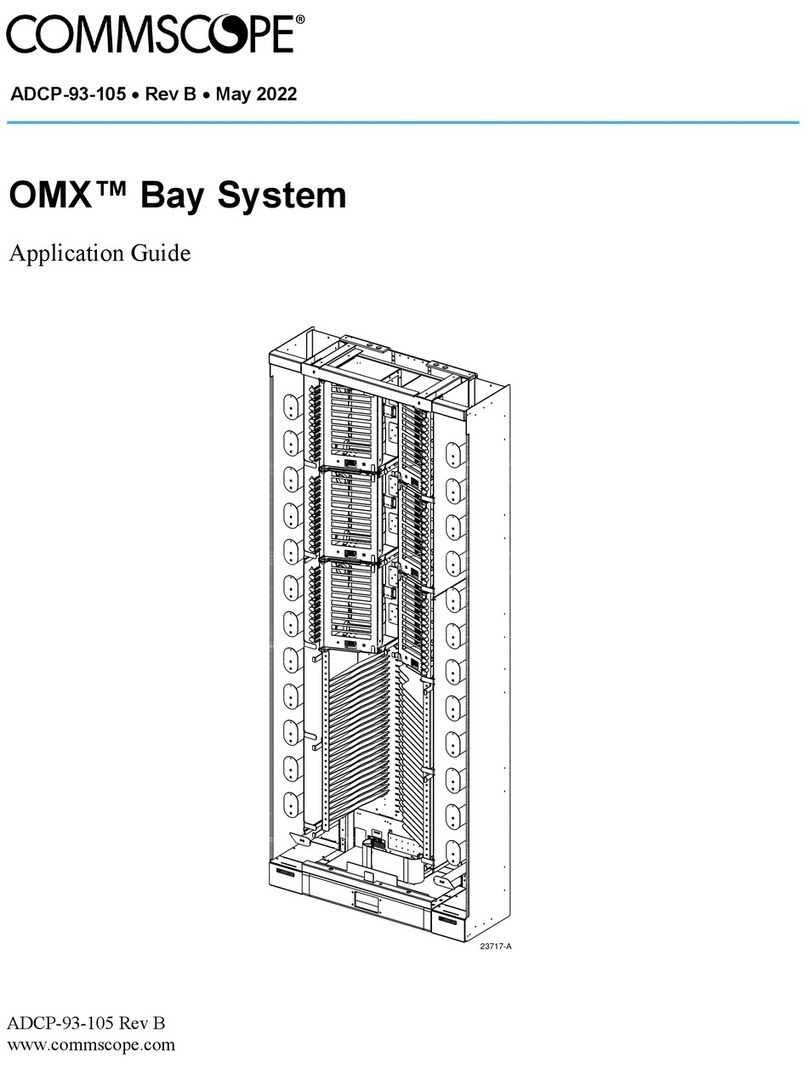
CommScope
CommScope OMX Bay System Application guide
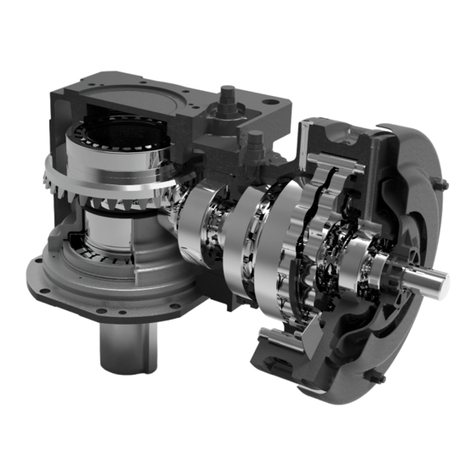
Sumitomo
Sumitomo Cyclo BBB4 Operation and maintenance manual
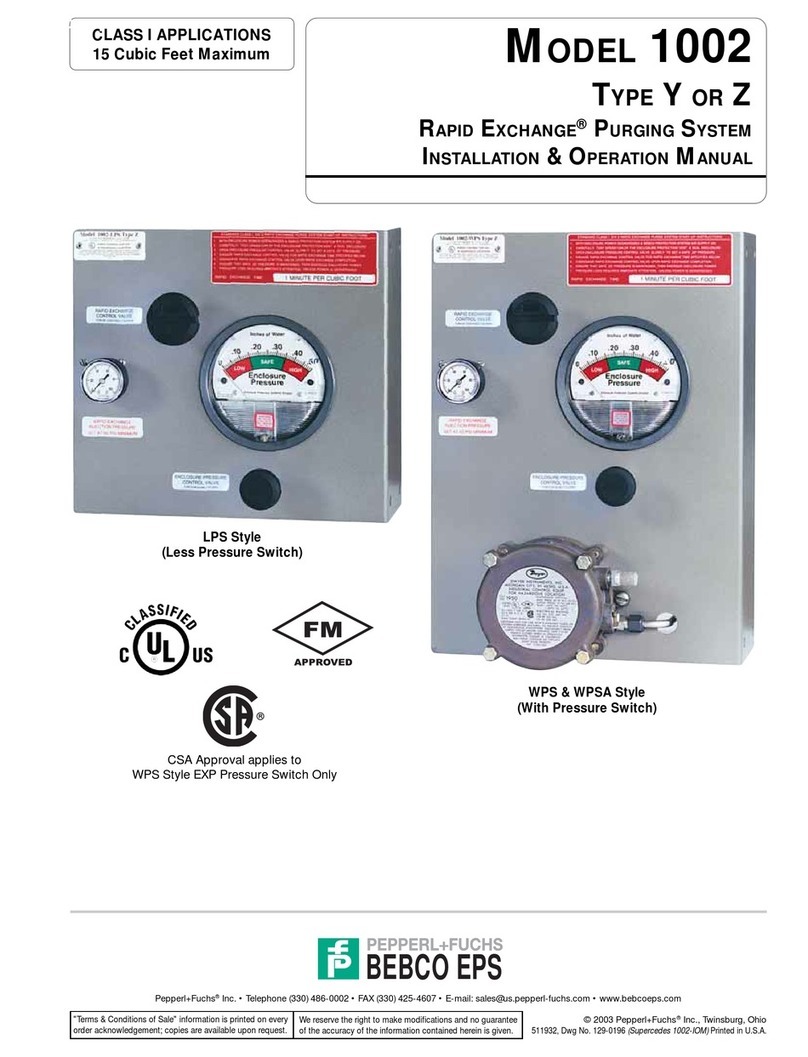
Pepperl+Fuchs
Pepperl+Fuchs BEBCO EPS 1002 Installation & operation manual
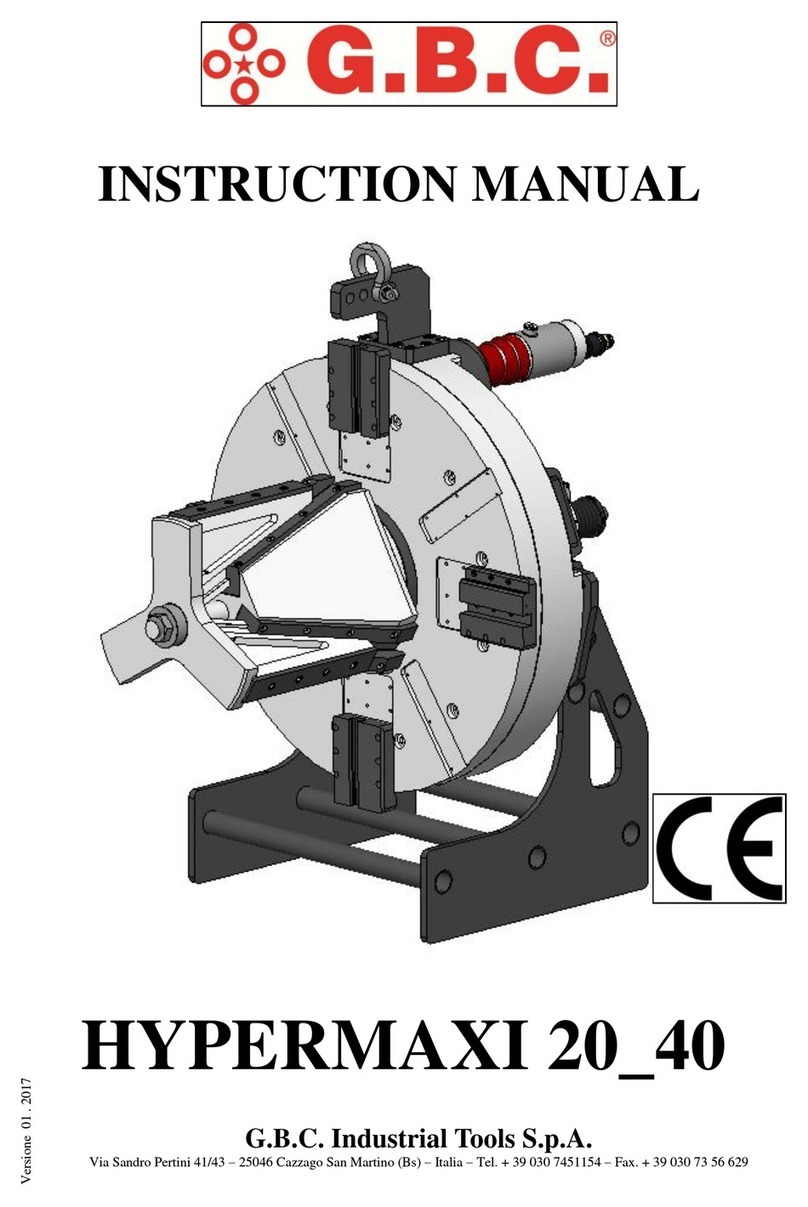
G.B.C
G.B.C HYPERMAXI 20 instruction manual
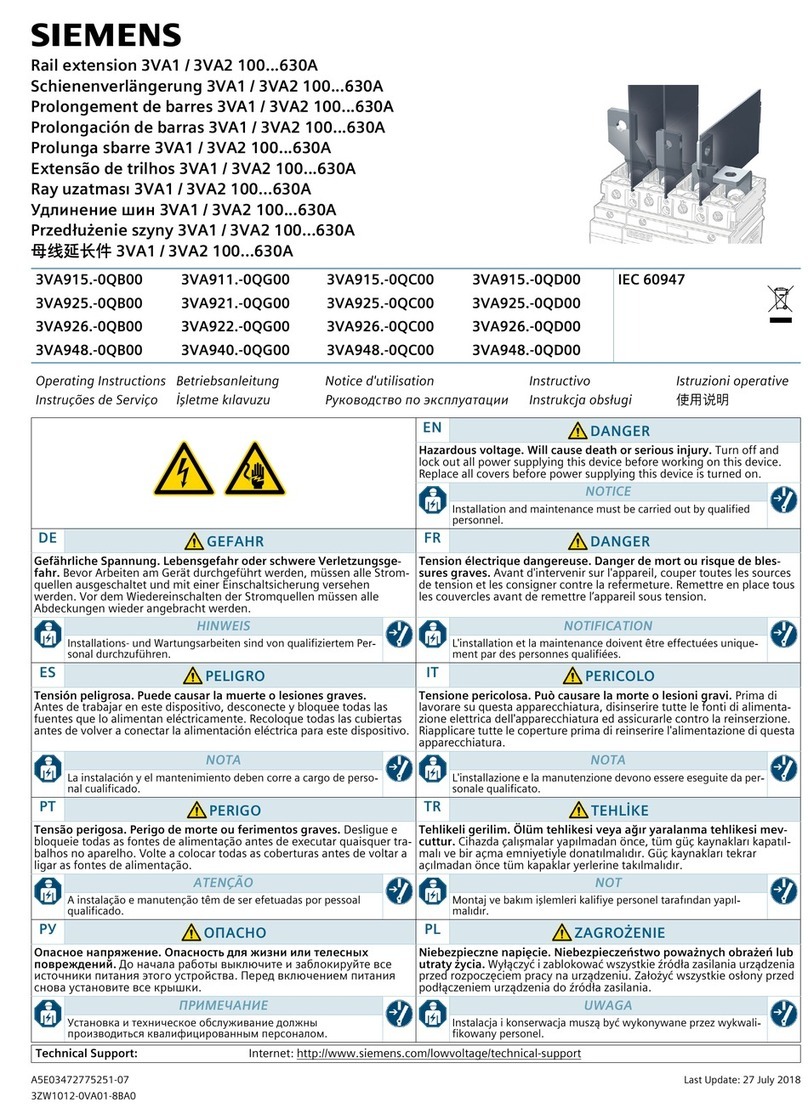
Siemens
Siemens 3VA1 100 630A Series operating instructions
